’21 Honoree Robin Oldfield


“On March 10th, Governor DeWine, Dr. Amy Acton, and Randy Gardner, chancellor for Ohio higher education, held a teleconference and I was sitting in the Conference Room with Dr. Buchwalder. It was such an intense meeting – they were imploring that we have to slow down the virus. They said, ‘It is up to us to determine how many people die. Quick, strong action will save lives.’ DeWine shared the powerful example that we are now where Italy was 10 days ago, and said, ‘We can follow that path, or we can disrupt it.’ He had not made a mandate at that moment, but right then we knew that we had some really tough decisions to make.”

“On March 10th, Governor DeWine, Dr. Amy Acton, and Randy Gardner, chancellor for Ohio higher education, held a teleconference and I was sitting in the Conference Room with Dr. Buchwalder. It was such an intense meeting – they were imploring that we have to slow down the virus. They said, ‘It is up to us to determine how many people die. Quick, strong action will save lives.’ DeWine shared the powerful example that we are now where Italy was 10 days ago, and said, ‘We can follow that path, or we can disrupt it.’ He had not made a mandate at that moment, but right then we knew that we had some really tough decisions to make.”
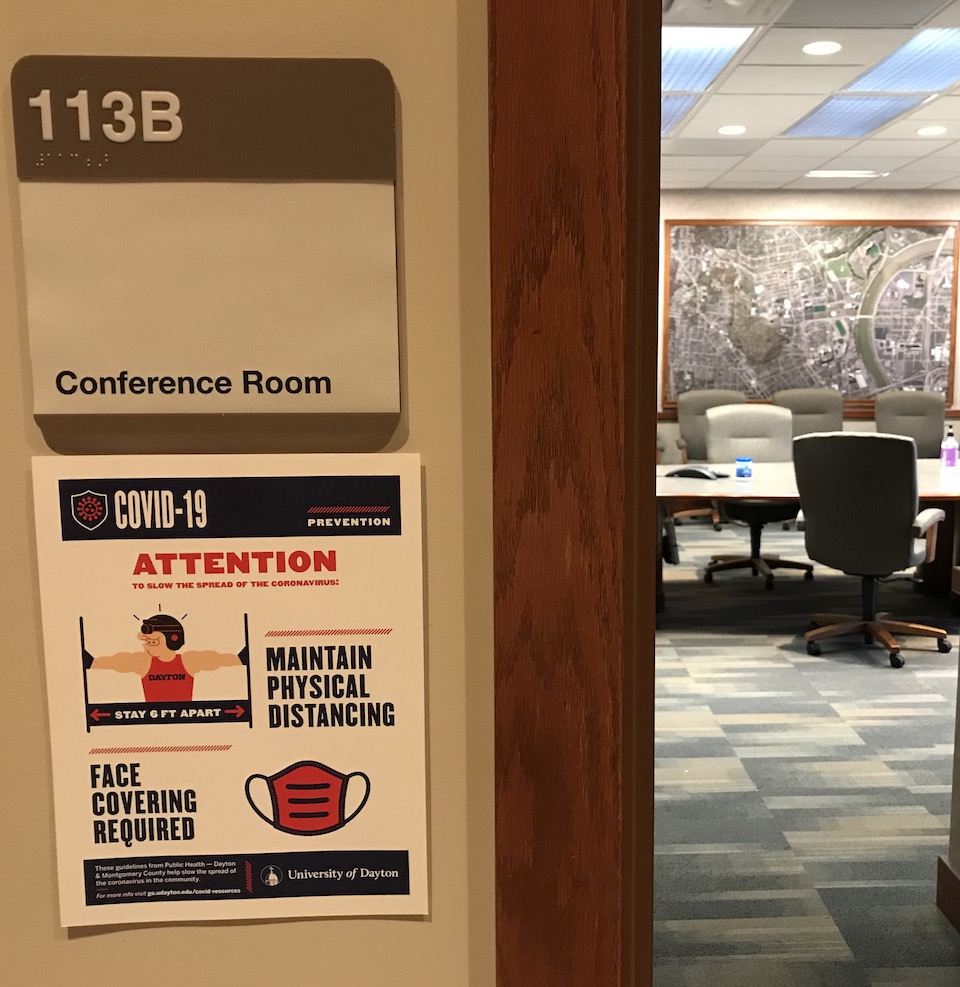
“That day we met down in St. Mary’s 113B, and Public Health Dayton and Montgomery County was in the room. Eric, Andy, Paul, Bill and the executive Path Forward taskforce were there, including Neil Sullivan. We had the Tournament games coming up. We had just hosted ‘ESPN Gameday’ and were preparing to host the First Four, and there was all of this emotion. It was such a collective and profound moment when we knew what we had to do: send students home early for Spring Break and prepare them to be remote. I was sitting next to Neil and I still can feel the emotion, you know, that the men’s basketball team had made it so far. And I know it wasn’t about that, but in that moment everybody was a team player. Everybody was making the decision regardless of the impact it was going to have on them individually. It was so powerful. An email went out that night instructing students to leave campus by 6pm March 11th. Then, it was like falling downhill.”

“That day we met down in St. Mary’s 113B, and Public Health Dayton and Montgomery County was in the room. Eric, Andy, Paul, Bill and the executive Path Forward taskforce were there, including Neil Sullivan. We had the Tournament games coming up. We had just hosted ‘ESPN Gameday’ and were preparing to host the First Four, and there was all of this emotion. It was such a collective and profound moment when we knew what we had to do: send students home early for Spring Break and prepare them to be remote. I was sitting next to Neil and I still can feel the emotion, you know, that the men’s basketball team had made it so far. And I know it wasn’t about that, but in that moment everybody was a team player. Everybody was making the decision regardless of the impact it was going to have on them individually. It was so powerful. An email went out that night instructing students to leave campus by 6pm March 11th. Then, it was like falling downhill.”
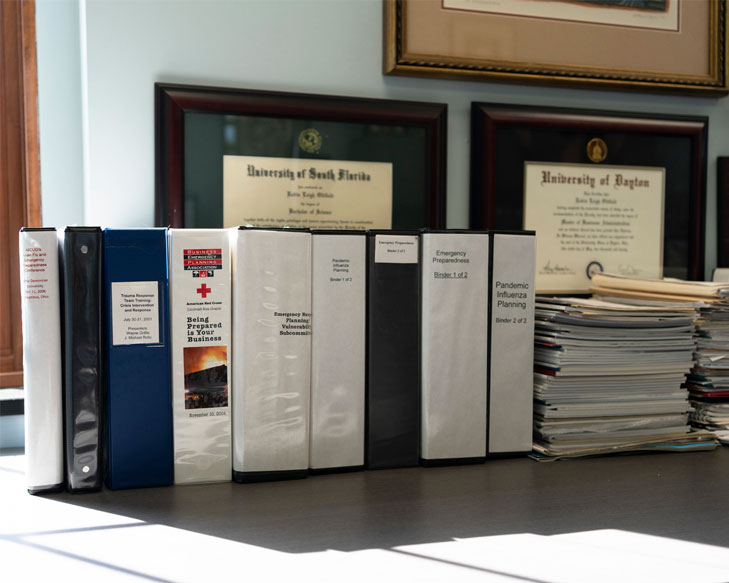
“Things were changing so rapidly, it was mind-boggling. We had to factor in the CDC guidance and the things that we were learning in our work with the public health officials. This was one of those events where I knew that I needed to take action and pull people together, ask questions, collaborate and plan for the worst-case scenario. As chief risk officer, that’s my job, right? We began working with departments on their business continuity plans but planning turned into action within two days. I’m the kind of person that can see the whole picture and am able to connect dots. I needed to identify the risks in that very first meeting. I’ve been doing emergency management for 21 years. I’ve developed pandemic plans, it’s what I do, but this was a real-life pandemic! I went into action mode and haven’t stopped.”

“Things were changing so rapidly, it was mind-boggling. We had to factor in the CDC guidance and the things that we were learning in our work with the public health officials. This was one of those events where I knew that I needed to take action and pull people together, ask questions, collaborate and plan for the worst-case scenario. As chief risk officer, that’s my job, right? We began working with departments on their business continuity plans but planning turned into action within two days. I’m the kind of person that can see the whole picture and am able to connect dots. I needed to identify the risks in that very first meeting. I’ve been doing emergency management for 21 years. I’ve developed pandemic plans, it’s what I do, but this was a real-life pandemic! I went into action mode and haven’t stopped.”
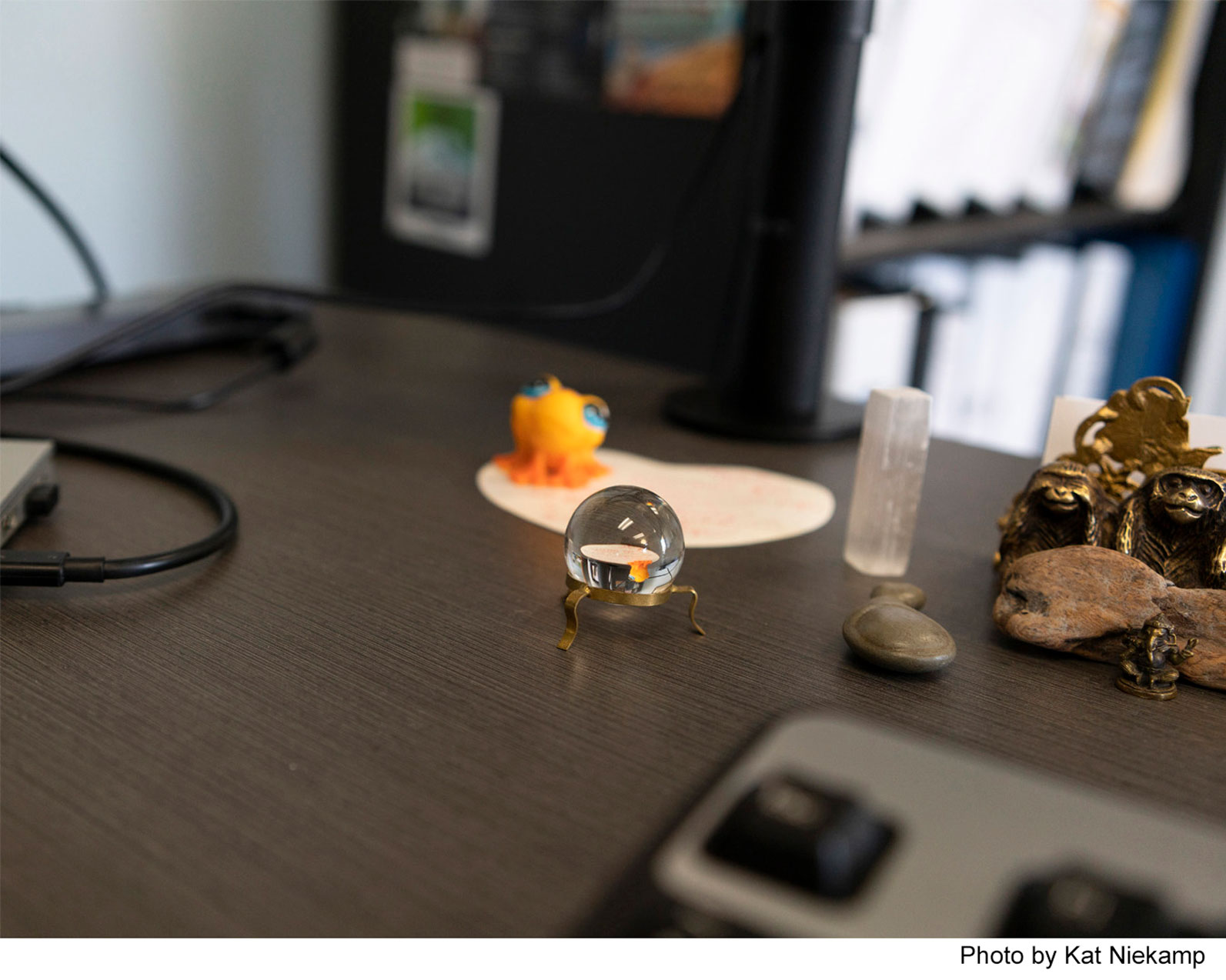
“You get the right people in the room, and then you figure out how to manage the risks and keep people safe. The executive team was meeting daily. I pulled a group together, and we actually had to use the Ballroom. The list of attendees was huge. Leadership had to trust me to pull other people together because we had to answer questions like, ‘We’ve got Reunion Weekend,’ and ‘We’ve got the NCAA Tournament,’ and ‘We've got the A-10 Tournament,’ and ‘We've got this event, what are we going to do about this?’ So there’s a running joke that I had so many people coming to me for answers – as if I have a crystal ball – but I really do have a little one (in my office).”

“You get the right people in the room, and then you figure out how to manage the risks and keep people safe. The executive team was meeting daily. I pulled a group together, and we actually had to use the Ballroom. The list of attendees was huge. Leadership had to trust me to pull other people together because we had to answer questions like, ‘We’ve got Reunion Weekend,’ and ‘We’ve got the NCAA Tournament,’ and ‘We've got the A-10 Tournament,’ and ‘We've got this event, what are we going to do about this?’ So there’s a running joke that I had so many people coming to me for answers – as if I have a crystal ball – but I really do have a little one (in my office).”
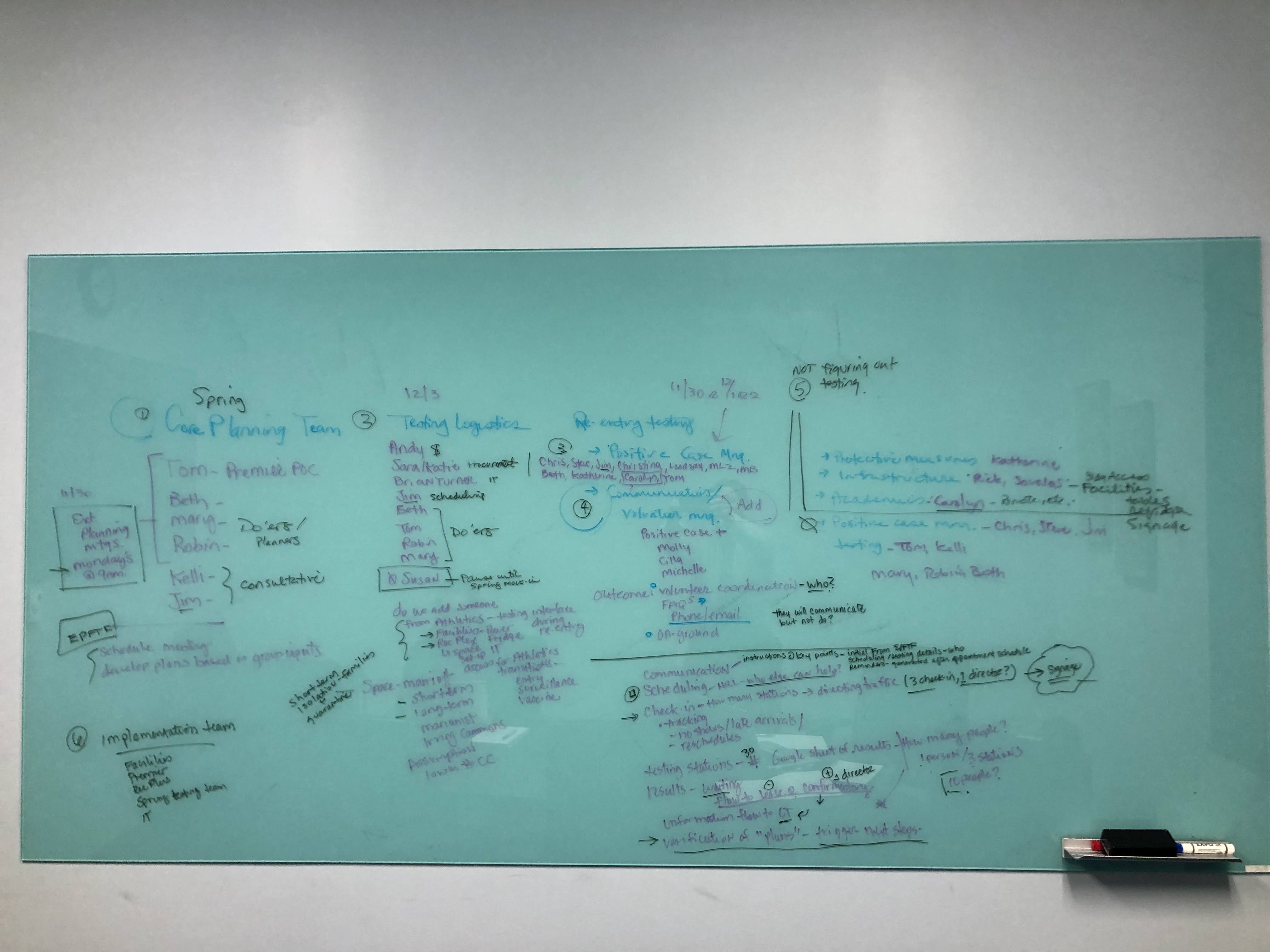
“So, when you ask me if you should think of me as the ‘orchestrator of Path Forward,’ I would say the way I’ve referred to myself is the ‘administrative liaison.’ I worked to identify the chairs of the Path Forward teams and then they built teams underneath them to help. We put together guiding principles so they could go to their teams and develop working plans; and we outlined, ‘So here’s what you need to do.’ And then, ‘Here are some deliverables.’ Then we put together those plans, and got them over to MarComm, who put them up on the website. For the Town Halls, this provided the executive Path Forward team opportunities to share what we were doing to keep the community safe. That’s kind of how it flows.”

“So, when you ask me if you should think of me as the ‘orchestrator of Path Forward,’ I would say the way I’ve referred to myself is the ‘administrative liaison.’ I worked to identify the chairs of the Path Forward teams and then they built teams underneath them to help. We put together guiding principles so they could go to their teams and develop working plans; and we outlined, ‘So here’s what you need to do.’ And then, ‘Here are some deliverables.’ Then we put together those plans, and got them over to MarComm, who put them up on the website. For the Town Halls, this provided the executive Path Forward team opportunities to share what we were doing to keep the community safe. That’s kind of how it flows.”
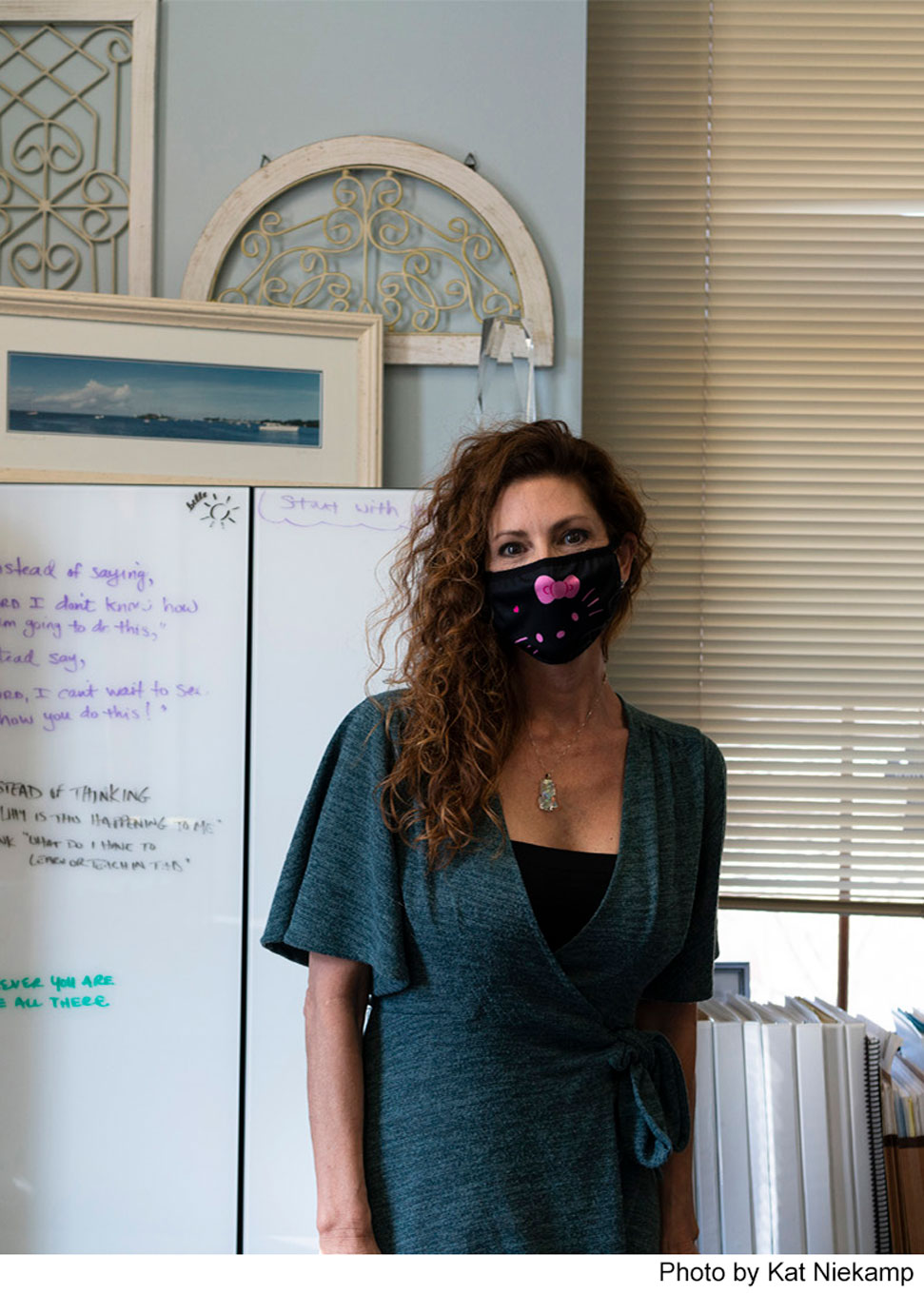
“I think the personal part for me is that as challenging as all of this has been and the number of hours it’s required, I worked with people who lost loved ones to COVID, not to mention the mental health impacts that the pandemic has had on us. But what keeps me going is that when you are in crisis, that’s when people seem to truly come together the most. And now, I still have to be thinking of all the risks, in the midst of so much civil and political unrest, the reckoning with racial injustice and our deep desire to be an anti-racist community. You know, there were just so many things coming to a head at the same time that when a lot of people were able to go remote and maybe have more reflective time, my job took me in the complete opposite direction.”

“I think the personal part for me is that as challenging as all of this has been and the number of hours it’s required, I worked with people who lost loved ones to COVID, not to mention the mental health impacts that the pandemic has had on us. But what keeps me going is that when you are in crisis, that’s when people seem to truly come together the most. And now, I still have to be thinking of all the risks, in the midst of so much civil and political unrest, the reckoning with racial injustice and our deep desire to be an anti-racist community. You know, there were just so many things coming to a head at the same time that when a lot of people were able to go remote and maybe have more reflective time, my job took me in the complete opposite direction.”
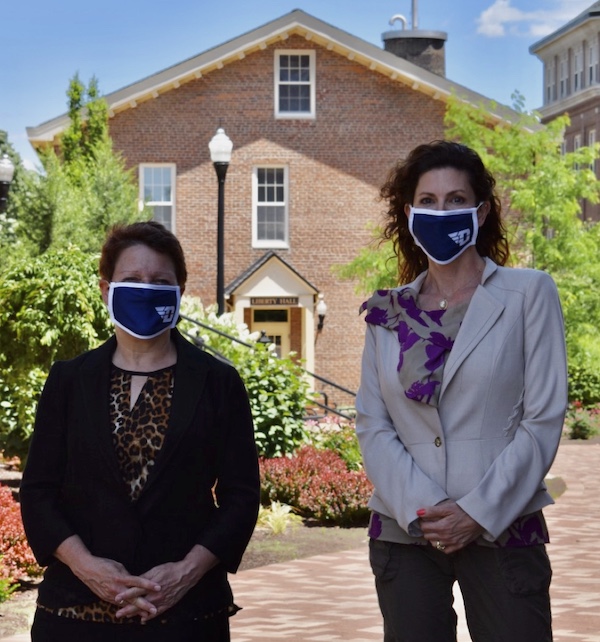
“I was running so fast. I didn’t have time to reflect on everything – I was reacting to it. And so it’s going to be interesting when all of this is over to find out how I process it. Who knows the long-term effect of this, is this making us a better human race? I hope so. All of this turmoil and churning of events, all at the same time, it feels very profound. I hope that we see each other more as humans and now have some ability, especially the University, to help define what we want to be when this is over. That’s the grace of it, right? We don’t have to go back to March 9th – before we made that decision. We are functioning in a new way. We’re a new university.”

“I was running so fast. I didn’t have time to reflect on everything – I was reacting to it. And so it’s going to be interesting when all of this is over to find out how I process it. Who knows the long-term effect of this, is this making us a better human race? I hope so. All of this turmoil and churning of events, all at the same time, it feels very profound. I hope that we see each other more as humans and now have some ability, especially the University, to help define what we want to be when this is over. That’s the grace of it, right? We don’t have to go back to March 9th – before we made that decision. We are functioning in a new way. We’re a new university.”
